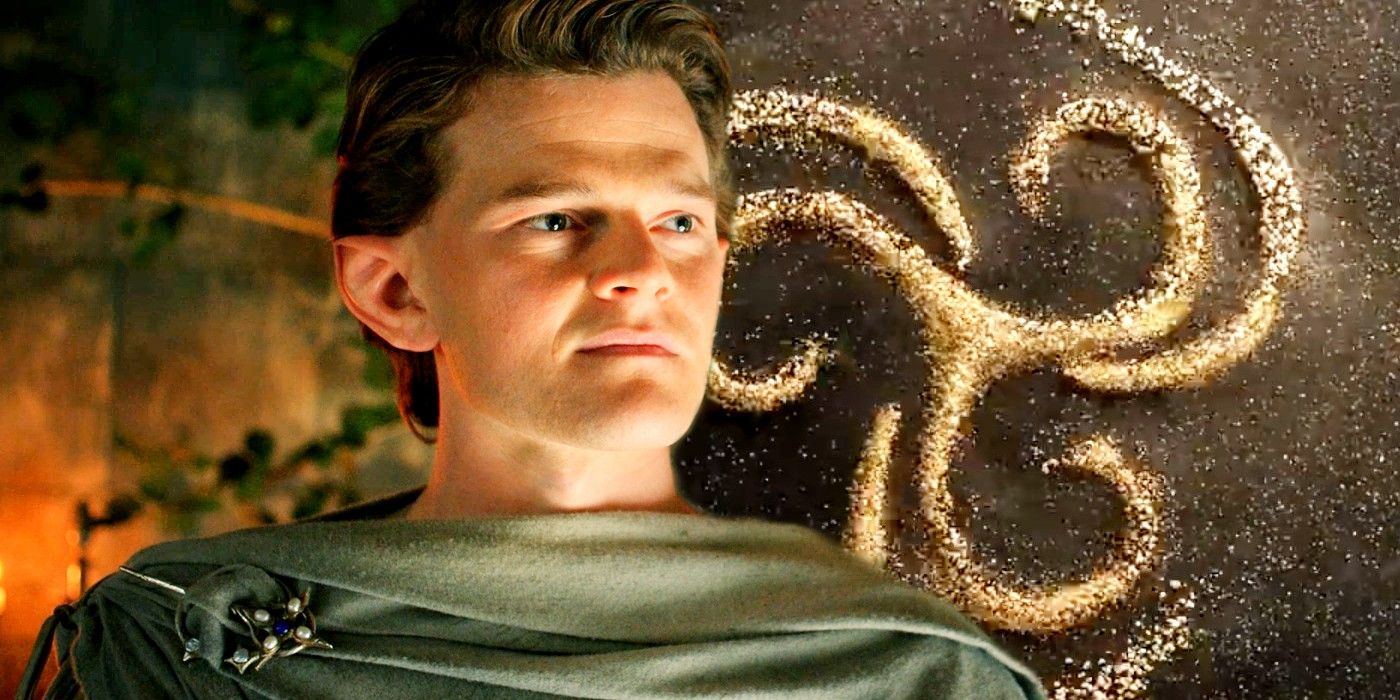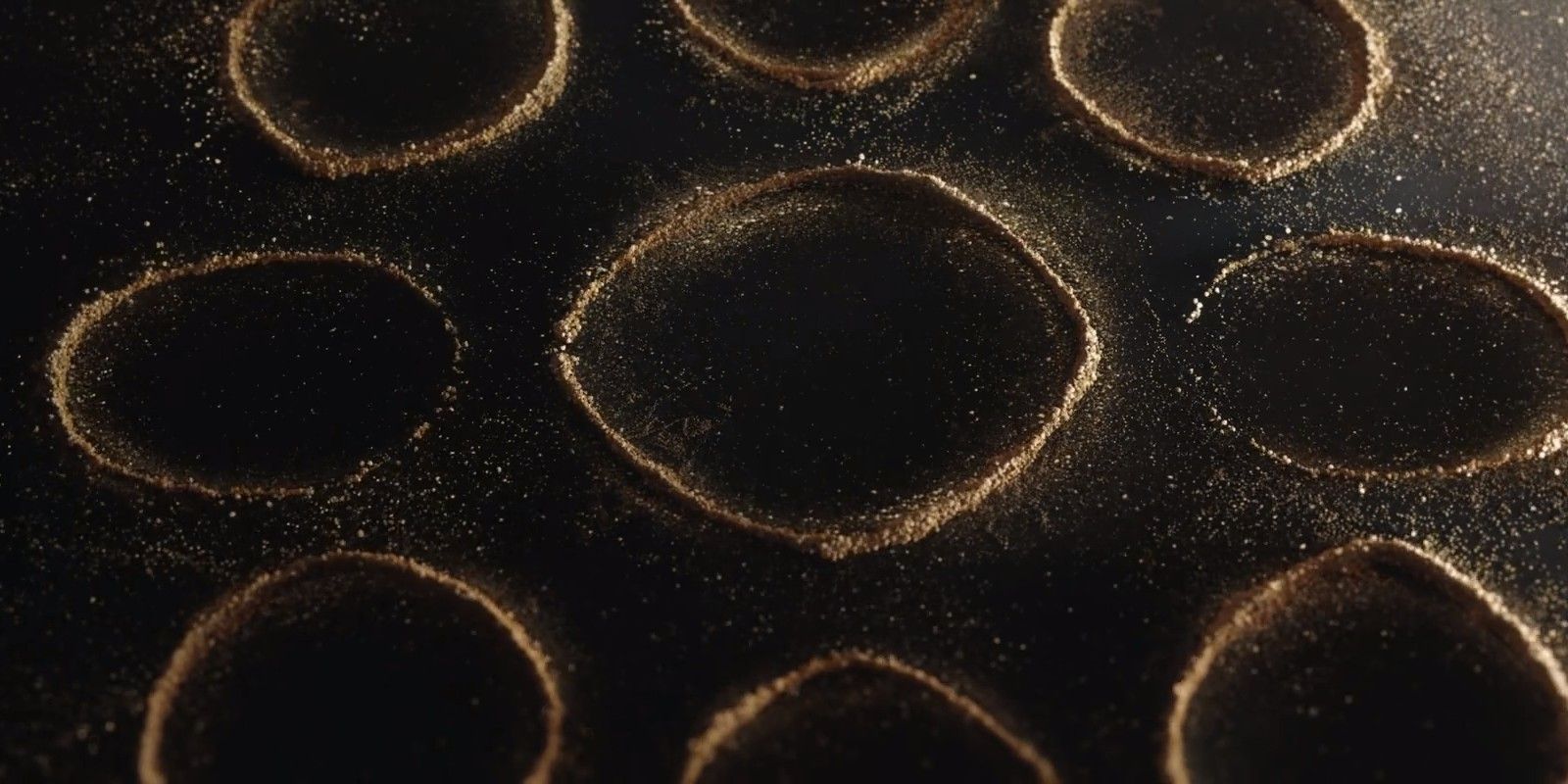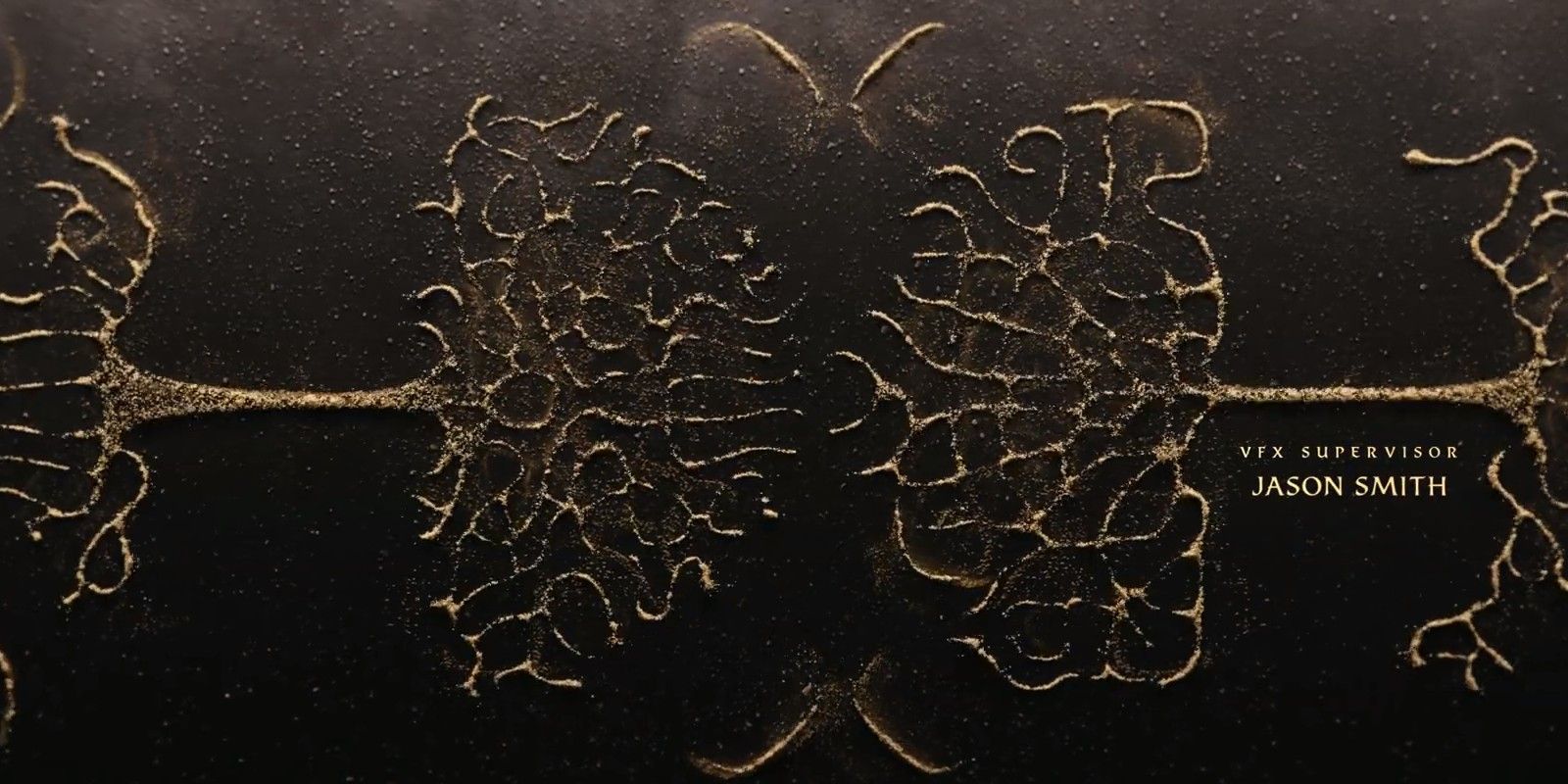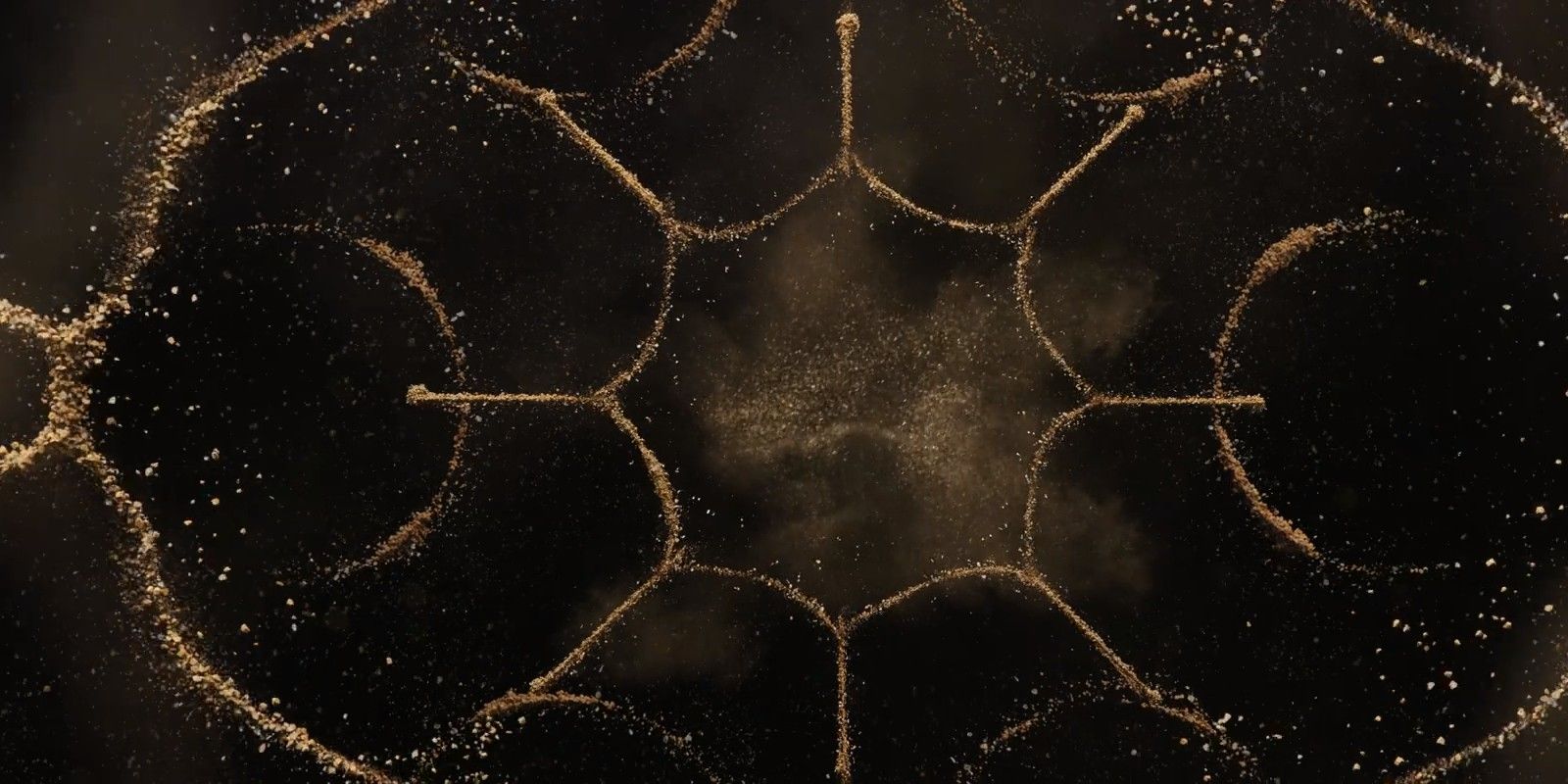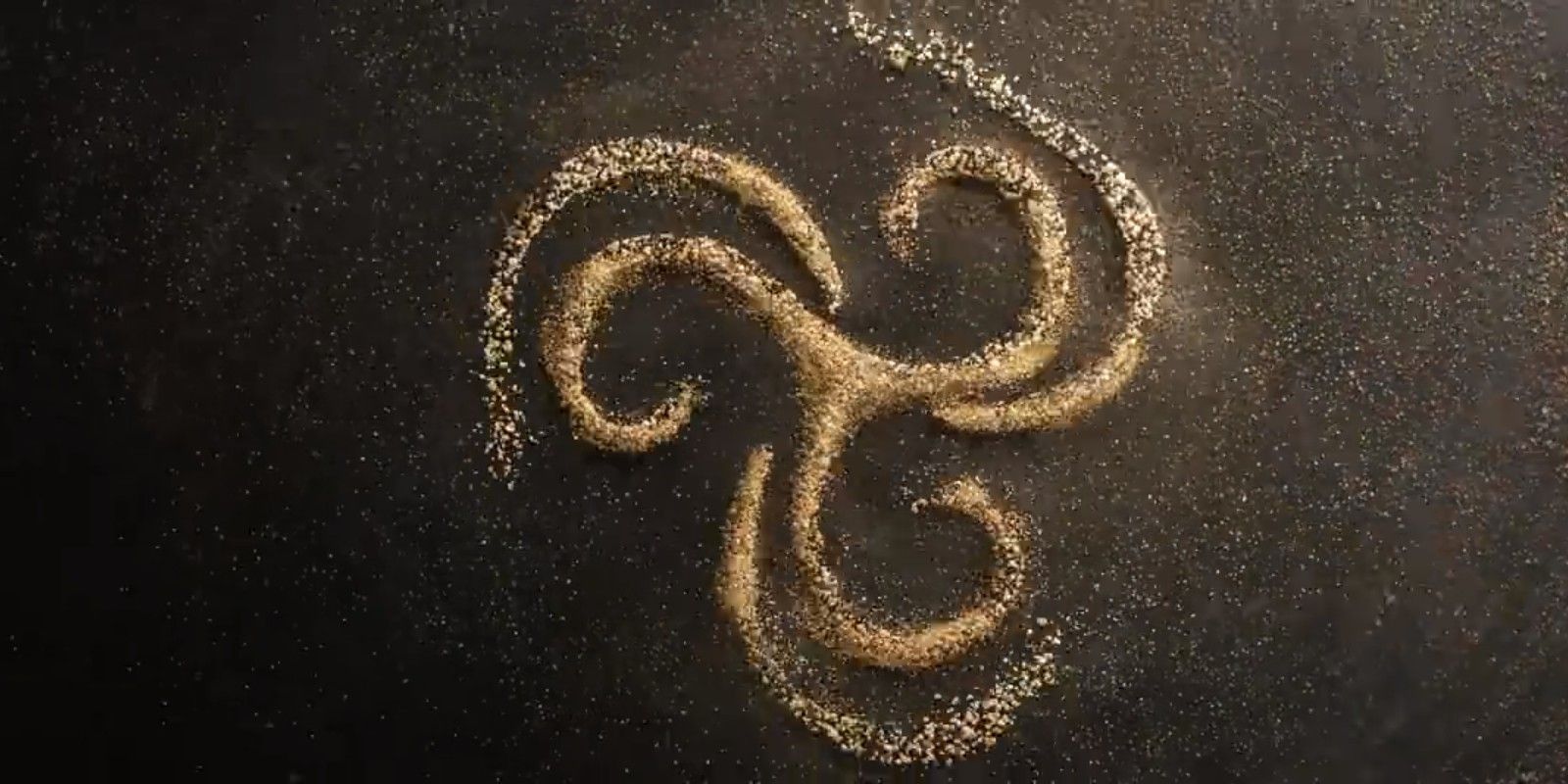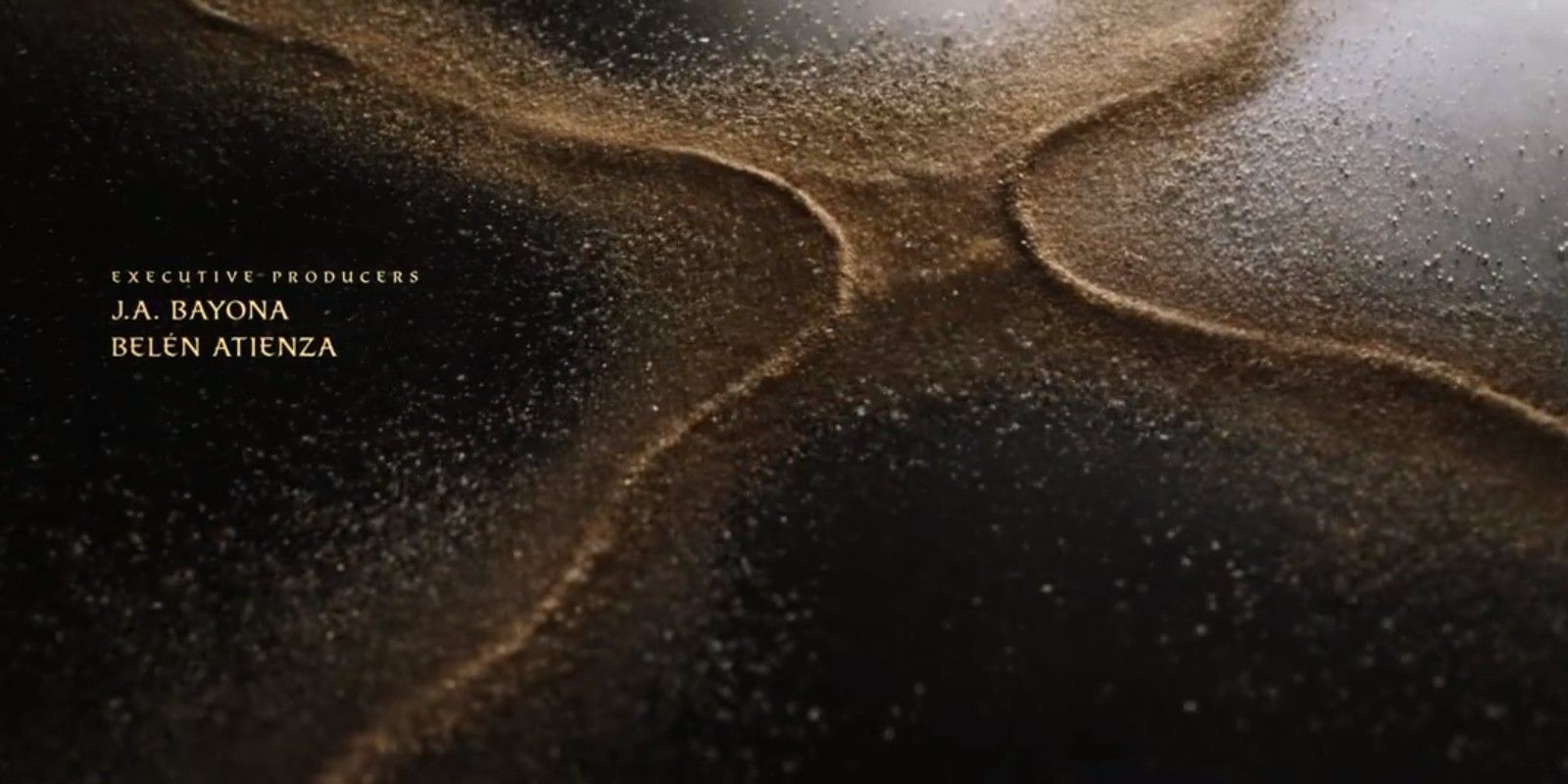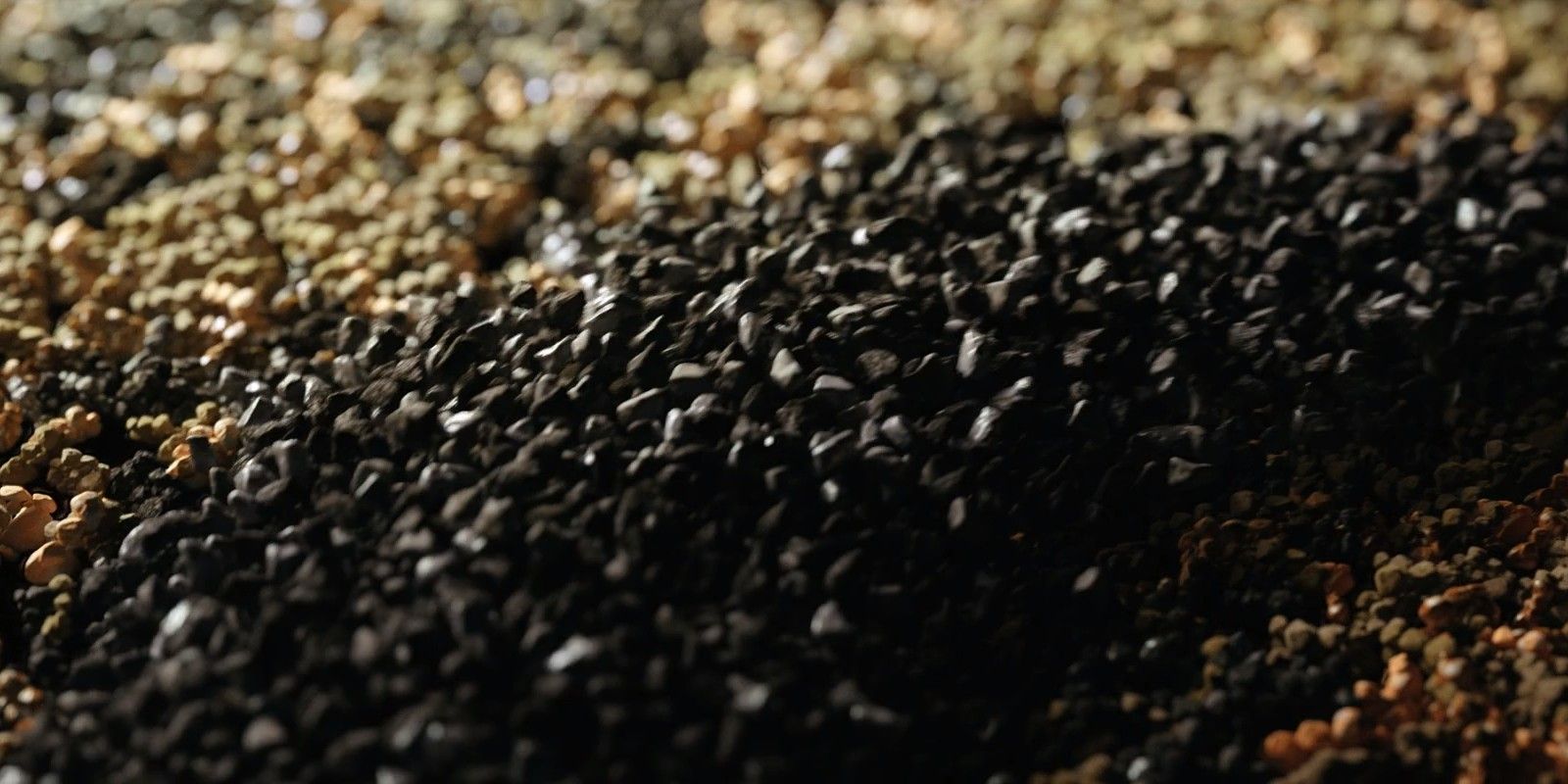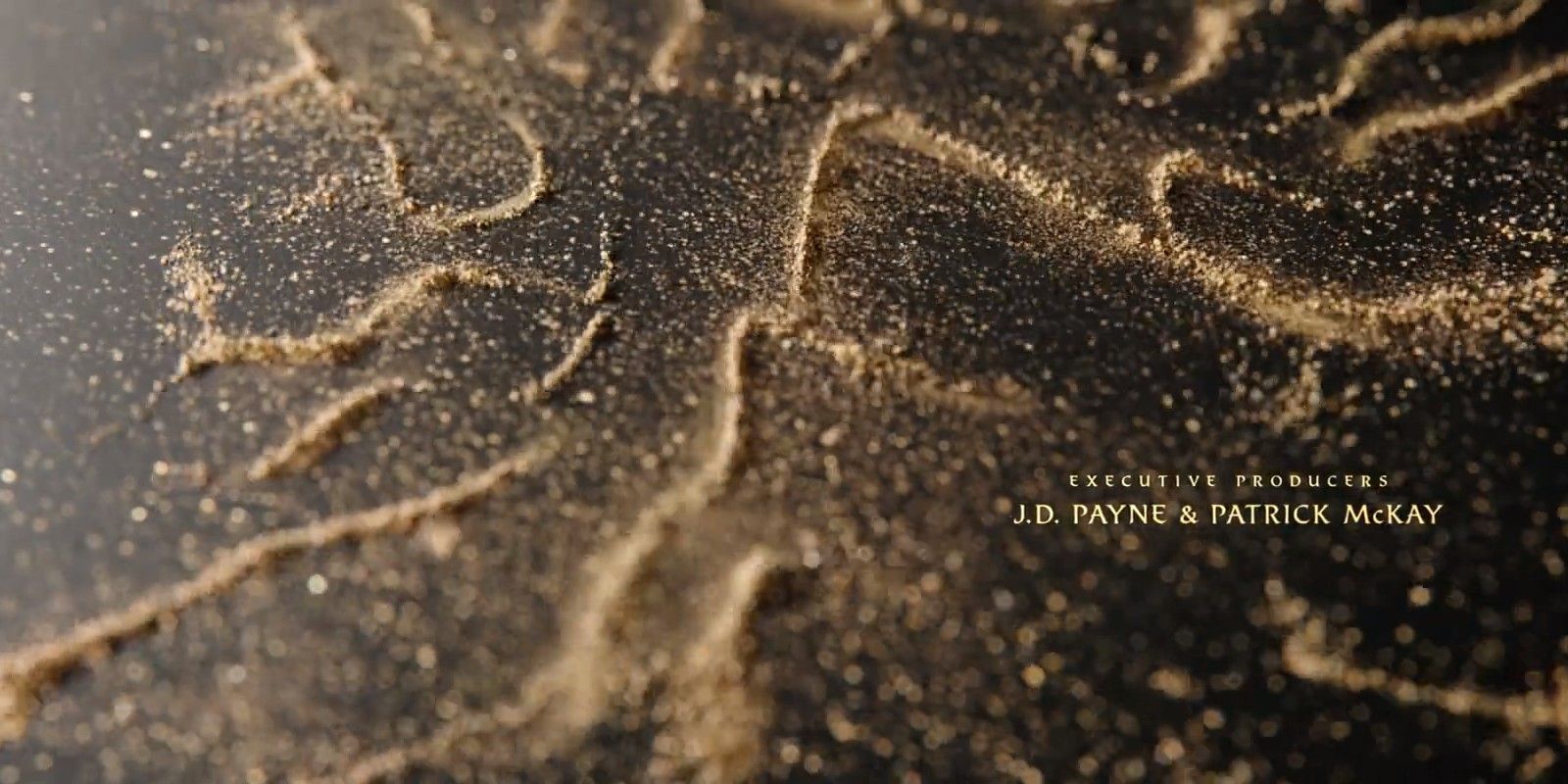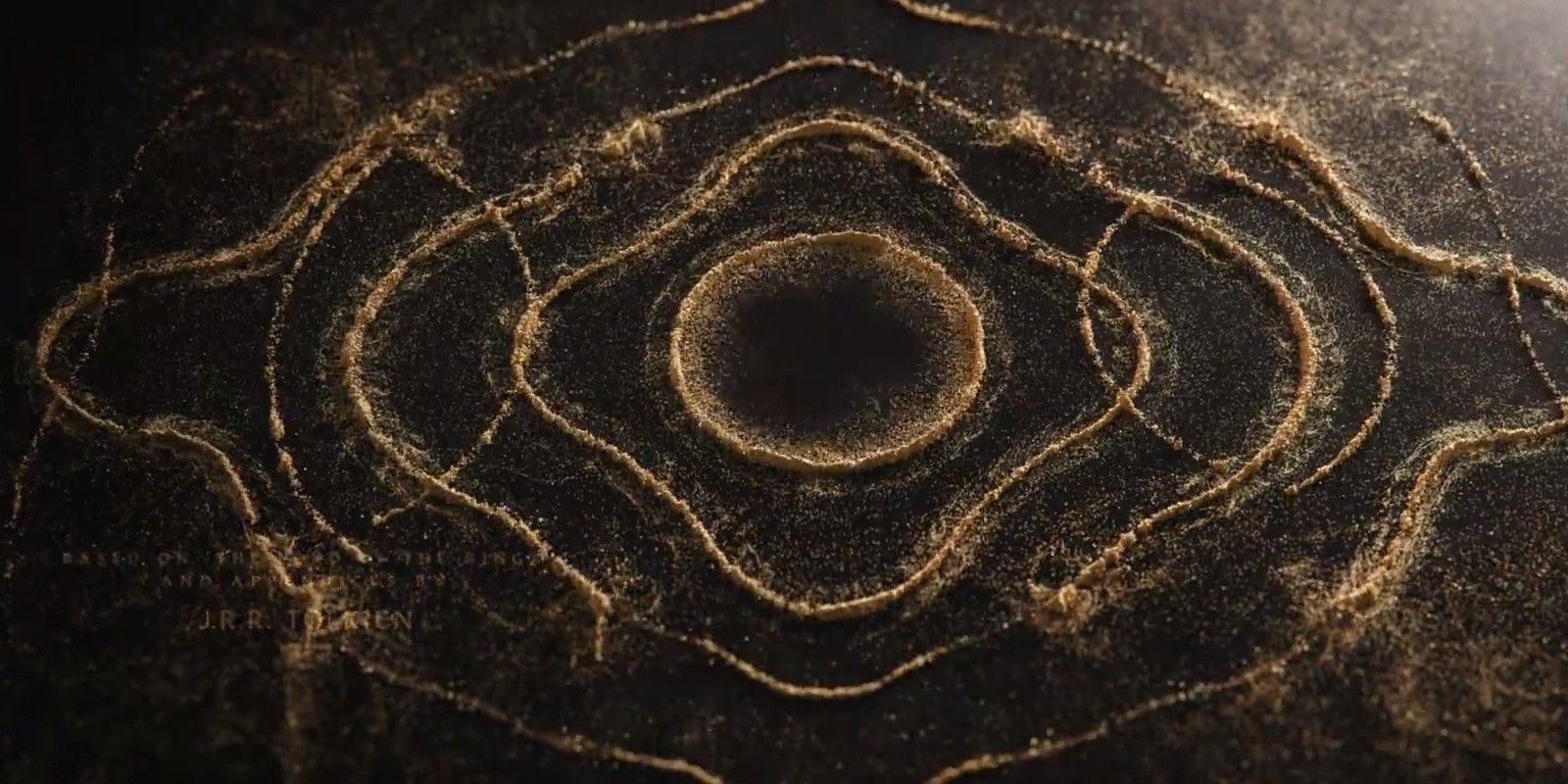Warning: spoilers ahead for The Rings of Power episodes 1 & 2Wondering what all those shapes and sigils are in The Lord of the Rings: The Rings of Power's magical opening credits? Here's our interpretation of every gilded detail. Amazon's The Rings of Power follows a growing trend of TV shows forgoing an opening sequence in its premiere episode. The Rings of Power episode 1 is content with a lone title card separating Galadriel's history lesson from the main narrative, and only in episode 2 ("Adrift") are audiences treated to a proper opening credits.
It's as majestic as you'd expect from a show as undeniably gorgeous (and eye-wateringly expensive) as The Rings of Power. Golden and black granules dance around the screen like sand in the wind, seamlessly morphing between various shapes as Howard Shore's theme blares triumphantly in the background. Simultaneously delicate and empowering, The Rings of Power's opening titles sets the mood for the Middle-earth shenanigans to come.
The shapes these tiny grains take allude to plot points and character details from The Lord of the Rings mythology, but (likely by design) there are several ways of interpreting their meaning. Many shots hold relevance to both the past and future of Middle-earth lore. Here's every clue and detail in The Rings of Power's opening titles.
The Rings Of Power's Opening Credits Represent The Ainulindalë & Years Of The Trees
The overall concept behind The Rings of Power's opening titles appears inspired by J.R.R. Tolkien's creation story - the Ainulindalë. At the very beginning of time, Eru Ilúvatar (god) and his Ainur (angels) sat in a circle and sang the world of Arda and its entire history - Middle-earth included - into existence. The grains of rock shifting to music in The Rings of Power's title sequence echo the Ainulindalë's song of creation.
The shapes the rocks take, however, can be interpreted as a brief history of Tolkien's fictional universe leading up to The Rings of Power. Our first notable image depicts a large central circle surrounded by eight others. This could symbolize the Ainulindalë itself, with Eru in the center and his Ainur on the outside (there were more than eight, but perhaps a few were cut for the sake of geometric symmetry). Intentionally or otherwise, the visual of nine rings in a show called The Rings of Power can't help but also conjure memories of the nine rings Sauron gifted to men, who were then corrupted and became his Nazgûl.
The Two Trees Connect Valinor To Gondor
The Rings of Power moves from nine rings to two trees, as the sand rearranges to form opposing tree shapes. These are surely intended as Telperion and Laurelin - the Two Trees of Valinor seen in The Rings of Power's introduction. Those of a Gondorian persuasion may notice the obvious similarity between these sand sketches and the White Tree of Gondor emblazoned upon the flags carried by Aragorn's army in The Lord of the Rings - and there's a good reason for that. The Valar made a tree in Telperion's image as a gift for the Elves. Its seedling then passed onto Númenor (which will appear in The Rings of Power imminently), and thanks to Isildur, subsequently onto Gondor. Drawing the Two Trees in Valinor in the style of Gondor's flag, therefore, makes perfect sense.
The Star Of Fëanor
Next, Howard Shore's orchestration pushes The Rings of Power's sentient granules into forming an eight-pointed star - a shape synonymous with the House of Fëanor. This makes sense, as Fëanor's influence upon Arda's history books began during the Years of the Trees, and would rumble on for thousands of years thereafter. Galadriel actually neglects to mention Fëanor during her history lesson in The Rings of Power episode 1, but the hammer-happy elf is referenced during Elrond and Celebrimbor's conversation in episode 2, confirming his role in Amazon's early Middle-earth history remains intact.
The Three Silmarils
Of course, the Star of Fëanor is immediately followed by a symbol representing his greatest creation: the Silmarils. The swirl of three circles arranged in a triangle shape mirrors how Tolkien's three Silmarils are often visually presented, and their creation came during the Years of the Trees, fitting the title sequence's stroll through history. Once again, Galadriel forgets the Silmarils during The Rings of Power season 1's cataclysmic opening, leaving Elrond and Celebrimbor to pick up the slack in episode 2. The Silmarils' presence in The Rings of Power's opening credits subtly signifies their importance to the lore of Middle-earth.
A Diamond Splitting - Division Among The Elves?
Less clear-cut than most of the symbolism within The Rings of Power's opening credits is the diamond shape that splits into two distinct lines. One possible interpretation is Fëanor's Silmarils beginning to sow division among the Elves - a sundering that would take many thousands of years to heal. The two shapes left over could then relate to the disconnected shores of Valinor and Middle-earth - once so closely linked, now standing alone.
The Black Infecting The Gold - Morgoth Appears
As if to dispel any lingering suspicion of what The Rings of Power is really about, dark grains of black rock begin snaking their way through the gold, infecting the mixture. The music turns more sinister and the sand's movements intensify, becoming sharper and aggressive. If The Rings of Power's opening sequence represents the Ainulindalë, then the addition of darkness marks Morgoth (then known as Melkor) changing Eru's music. The villain began (quite literally) singing from a different hymn sheet during the Ainulindalë, and his unplanned solo is how darkness in Arda started.
In terms of the history The Rings of Power's opening credits tells, the arrival of darkness can also signify when Morgoth destroyed the trees, poisoned Fëanor's mind, stole the Silmarils, and slinked away to Middle-earth to kick off centuries of bloody war. As with the nine rings and two trees, however, the title sequence's encroaching darkness holds an importance to The Rings of Power's main timeline too. A creeping blackness marring brilliant gold is akin to Sauron infiltrating the Elves and weaving his dark magic into their Rings of Power - an event Amazon's TV series is already building toward.
The Wars Of Beleriand & Rise Of Númenor
After darkness sneaks into The Rings of Power's title sequence, the sand begins moving at pace, skipping through a series of shapes in rapid succession, most of which are difficult to discern. One image, however, bears the distinct likeness of a mountain range, which hints that the quick-fire changes could symbolize the reshaping of the world that occurred during First Age wars against Morgoth. Almost all of Beleriand was destroyed during the conflict, redrawing the map of Middle-earth entirely, while the isle of Númenor was raised from the sea. The image above appears to show Númenor's creation specifically, with the mountainous isle surrounded by wavy lines of sand that are probably supposed to be ocean.
The Eye Of Sauron/The One Ring
The Rings of Power's title sequence ends on a massive circle in the center of an ornate eye shape. There are two possible interpretations of this image, but both mean essentially the same thing: Sauron. The circle in the center is likely foreshadowing the One Ring, but the overall composition leans more toward the Eye of Sauron - the Dark Lord's logo to instill fear in the free peoples of Middle-earth. Whatever the intention, this final shot in The Rings of Power opening credits sends a clear message that the shadow looming over Middle-earth has transitioned from Morgoth to Sauron.
The Lord of the Rings: The Rings of Power continues Thursday/Friday on Prime Video.

